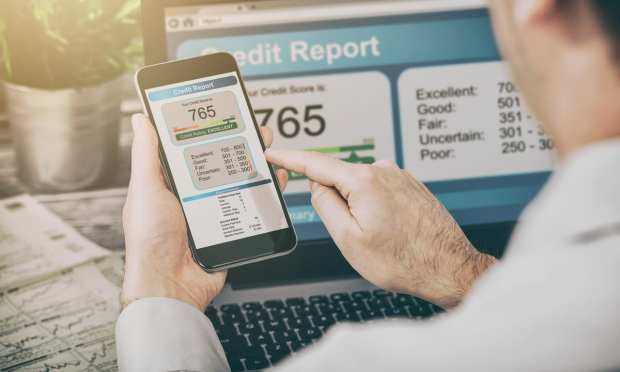Average Credit Scores Hit Record High As Credit Card Balances Drop

Despite a raging pandemic, widespread unemployment and a fragile economy, U.S. consumers paid more of their bills on time last year, resulting in the largest improvement in personal credit scores in more than a decade.
According to Experian’s 2020 Consumer Credit Review, the national average FICO score increased by 7 points last year, to a record 710, a rating that is considered “good” within a 5-tiered scoring system that ranges from 300 to 850, ranking scores from “very poor” to “excellent.”
To put the latest move into perspective, Experian said 2020’s larger-than-usual annual increase accounted for one-third of the total improvement in scores seen since 2010, which have inched higher in 9 of 10 years.
“Missed payments reported are down, consumer debt levels are decreasing and the significant steps taken by both the government [with] stimulus spending and private sector [with] lender payment accommodations to help consumers affected by COVID-19 are all contributing to this trend in average score,” said Tom Quinn, vice president of scores for FICO.
Still Heavily Indebted
According to the report, three of four major areas of personal borrowing saw average balances increase last year, with the exception of credit cards, which fell 14 percent to an average of $5,315 from almost $6,200 the year before.
Average personal loans rose 1 percent to $16,458 and auto loan balances rose by 2 percent to $19,703. However, the biggest increase in debt balances was seen in student loans, which rose by 9 percent to $38,792.
As far as real estate loans, home equity lines of credit or HELOC balances declined 7 percent to $41,954 on average, while the typical mortgage borrower’s balance rose by 2 percent to $208,185.
Using average numbers to illustrate America’s love affair with leverage can sometimes be misleading. According to the New York Federal Reserve Bank’s most recent Household Debt and Credit Survey (HHDC), Americans collectively owed a record $14.35 trillion as of the third quarter of 2020.
If you divide that total figure by the number of households you’re left with an average debt balance of nearly $150,000 and a median debt balance of close to $70,000.
Just to be clear, that average figure does not include $27 trillion in debt issued and held by state and federal governments that is theoretically the responsibility of citizens to repay, which works out to approximately $84,000 per person or just over $220,000 per taxpayer.
But hey … those average FICO scores have never looked better.
Scoring The Scorekeepers
To be sure, there are lots of reasons why average credit card balances declined last year, not least of which was the huge shift toward personal confinement and limited travel, dining out and other non-essential leisure activities caused by the pandemic.
Add in one the soon to be two injections of cash via federal direct stimulus payments to middle- and low-income households, as well as a general preference within certain demographics to use other means of payment, such as buy now, pay later (BNPL), and the balance declines and commensurate FICO score hikes start to make more sense.
Even so, the rating industry itself continues to face scrutiny, whether that is in the form of record consumer complaints to the Consumer Financial Protection Bureau (CFPB), calls for greater accountability from consumer advocacy groups or via legislative proposals being put forth by lawmakers — including President-elect Joe Biden’s suggestion for the creation of a public credit reporting agency.
In the current system, “consumers are not the customers of the Big Three credit bureaus,” Chi Chi Wu, staff attorney at the National Consumer Law Center, said of the public agency idea.
Although not likely to happen quickly, Wu said a public credit rating agency would provide an alternative for consumers that would be more accurate and responsive to consumers and make it easier to fix mistakes.
